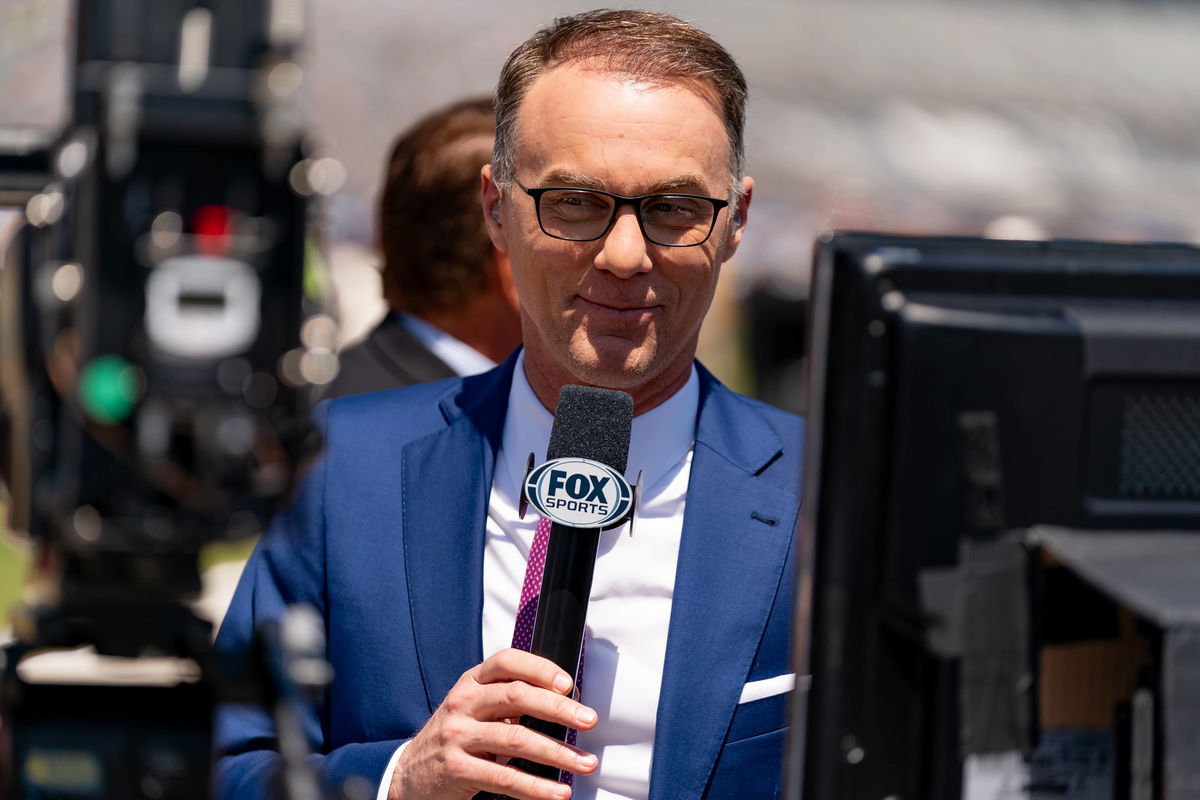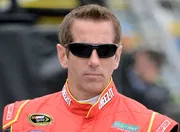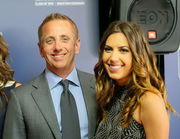
Imago
FORT WORTH, TX – APRIL 14: Broadcast announcer and NASCAR, Motorsport, USA legend Kevin Harvick smiles before the NASCAR Cup Series Autotrader EchoPark Automotive 400 on April 14, 2024 at Texas Motor Speedway in Fort Worth, TX. Photo by Chris Leduc/Icon Sportswire AUTO: APR 14 NASCAR Cup Series AutoTrader EchoPark Automotive 400 EDITORIAL USE ONLY Icon240413147400

Imago
FORT WORTH, TX – APRIL 14: Broadcast announcer and NASCAR, Motorsport, USA legend Kevin Harvick smiles before the NASCAR Cup Series Autotrader EchoPark Automotive 400 on April 14, 2024 at Texas Motor Speedway in Fort Worth, TX. Photo by Chris Leduc/Icon Sportswire AUTO: APR 14 NASCAR Cup Series AutoTrader EchoPark Automotive 400 EDITORIAL USE ONLY Icon240413147400
The 2026 NASCAR Cup Series schedule is undergoing a dramatic transformation, characterized by the spirit of innovation and a blend of the unique and the nostalgic. The most significant additions include the brand-new San Diego Street Course at Naval Base Coronado, marking the first-ever Cup race on an active U.S. military base, and the celebrated return of the 1.5-mile Chicagoland Speedway, replacing the temporary downtown Chicago Street Race.
Watch What’s Trending Now!
Furthermore, the historic North Wilkesboro Speedway, after hosting the All-Star Race, will receive its first point-paying race since 1996. But more importantly, the grand finale of the 2026 season will also shift addresses, with NASCAR Championship Weekend moving from Phoenix Raceway to Homestead-Miami Speedway. The 1.5-mile South Florida oval will host the Cup, Xfinity, and Truck Series finales as part of a newly implemented Championship Rotation model, and that is exactly what Kevin Harvick has emphasized when talking about dropping attendance rates.
ADVERTISEMENT
Kevin Harvick pushes for rotating Championship venues
In his Happy Hour podcast, Harvick acknowledged the genuine excitement and commitment and commitment from the attendees, stating he witnessed a vibrant atmosphere, “The crazy part about Phoenix is you talk about the campaign, you talk about the fan support. It’s been that way as long as I can ever remember going there. I used to go there as a little kid, and I think when you look at… Now, I don’t think it was as packed last year. They did a really good job this year of getting the fans there.”
Harvick’s core argument centers on the power of scarcity and novelty to increase demand, a concept that NASCAR has proven with past schedule adjustments. The recent surge in attendance at Phoenix, in his view, was partially fueled by the news that the Championship 4 race would be moving to Homestead-Miami in 2026. This anticipation of loss is a crucial factor in driving fan engagement.
Harvick explained his theory of diminishing returns for repetitive scheduling, stating, “I think some of that has to do with it’s not their next year. I think that any time, no matter what we do, we always seem to go down a path of going one too many times. I hope that when people see that we’re going to Homestead next year, I hope we’re not going to Homestead the year after. I hope we’re going somewhere else.”
ADVERTISEMENT
His co-host, Mamba Smith, supported this by referencing the success of single races at Pocono and New Hampshire, suggesting the events now feel more like a “party vibe.” Harvick provided his own specific historic examples, noting the positive effect of cutting back on multiple dates, suggesting, “It did the same thing at California Speedway when they went from two races to one. It was one great event instead of having two mediocre events.”
ADVERTISEMENT

He then cited other tracks that could benefit from this strategy of reducing the number of events to create a more exclusive feeling: “You look at a place like Kansas, Kansas really should be a one-race event because of the fact that you have two mediocre crowds. I think it would be a great one-race crowd. Chicagoland was the same way. It was a great one-race crowd.” Harvick’s optimism extends to the return of dormant tracks and introduction of unique events, viewing this variety as essential to the sport’s health.
ADVERTISEMENT
The announcement of the Cup Series returning to Chicagoland Speedway on the 2026 schedule for the first time since 2019 is a perfect test case for the “nostalgic place” effect he described. Harvick believed the long absence, combined with the capabilities of the current Next Gen car on the worn-out surface, would ignite significant enthusiasm, saying, “I think that crowd will be good when we go to Chicagoland because we haven’t been there in a while. It’s kind of like that nostalgic place that has been sitting idle since… It’s going to be a fire up.”
“I think these cars are going to put on a great race at Chicagoland because it’s rough. It’s worn out when we left. Not to mention it’s been sitting for how many years it’s been sitting,” he said, saying that the new street course in San Diego is fitting this model as well, “I think that San Diego is going to be… It’s going to be cool. Those one-of-a-kind events are really what the sport needs.” He further summarized his overall prescription for maximizing excitement and fan interest, arguing for a dynamic schedule where the biggest prize is always relocating.
He cemented his position, advocating that change is the secret weapon for sustained engagement, “Having the championship race at a different venue every year compared to the previous two or three years is the way that they should do it. I hope that when we go to Homestead, I hope the next year we’re going somewhere different.” The desire for perpetual change is ultimately aimed at boosting enthusiasm among core fans and attracting new ones with the “intrigue of where it is.”
ADVERTISEMENT
On the other hand, Harvick also warns against watering down dominance in NASCAR’s Next Gen era.
Top Stories
Footage Surfaces of Florida Police Arresting NASCAR Veteran Over Disturbing Public Misbehavior

Horrific Aerial Footage of Greg Biffle’s Fatal Crash Emerges Leaving NASCAR Community in Tears

Another Almost Fatal Disaster Surfaces From Statesville Airport Amidst Ongoing Greg Biffle’s Crash Investigation

NTSB Appeals for Greg Biffle’s Wife’s Alleged In-Flight Text Messages as Crash Investigation Heats Up

Major Blow to Trackhouse Racing as Team Penske Steals Veteran Crew Chief Back in Unexpected Move

Kevin Harvick sounds alarm over NASCAR’s fairness obsession
Kevin Harvick has long had an uneasy relationship with the Next Gen car, and his stance hasn’t softened. The 2014 Cup Series champion, once one of its fiercest critics, now warns that NASCAR’s efforts to “make it fair for everybody” are stripping the sport of its essence. “We’re in the ‘let’s try to make it fair for everybody’ evolution,” Harvick said on his Happy Hour podcast. “And I think when you’re in the middle of that, we made less stars.”
ADVERTISEMENT
Harvick pointed out that NASCAR’s parity experiment, which began with the Next Gen car’s 19 different winners in 2022, has already started to fade. “We had 14 drivers who won races this year, that’s the fewest since 2020,” he noted. “The good teams are starting to get the good people and the details, and all of a sudden, it’s migrating back to how it was.” For him, the resurgence of powerhouse outfits like Hendrick Motorsports and Joe Gibbs Racing is proof that the sport’s natural hierarchy is reestablishing itself.
“Let the stars be the stars,” Harvick urged, doubling down on his belief that NASCAR should stop trying to level the field. “You can’t make it fair for Rick Ware Racing compared to Rick Hendrick. It’s never going to be fair, and the more you try to water that down, the more you lose what makes this sport great.” As Phoenix proved, the biggest teams still rise. Dominance, as Harvick says, is not the problem. It’s the point.
ADVERTISEMENT
ADVERTISEMENT
ADVERTISEMENT

